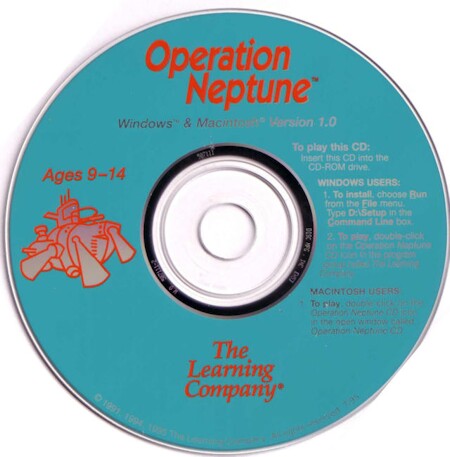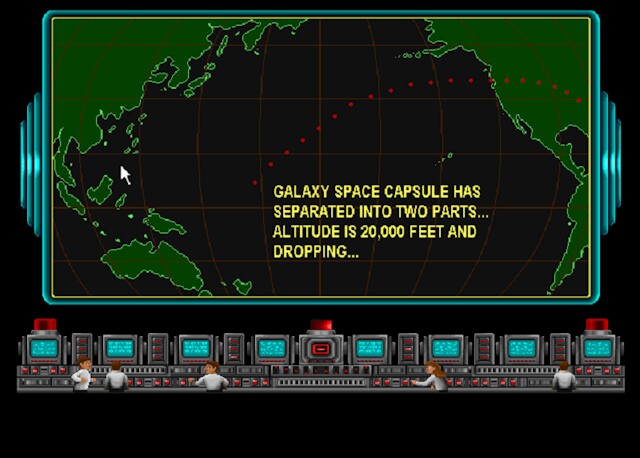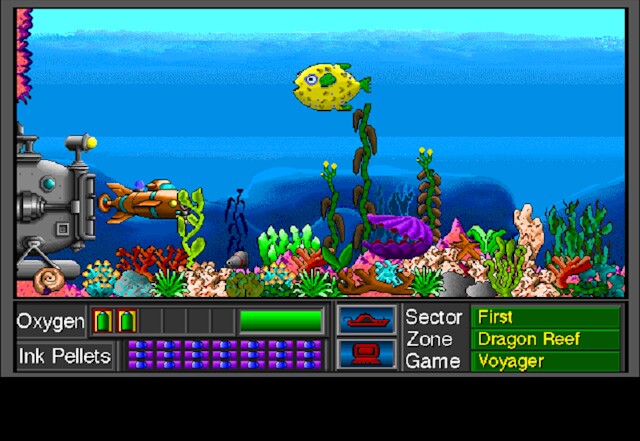
Actual Game
Super Solvers
|
The Game
Operation Neptune is a deep-sea adventure that builds pre-algebra and problem-solving skills. As you scour the ocean floor in your submarine, you must answer messages from the surface ship or the onboard computer. Math problems are contained in these messages. For instance, the computer identified an obstacle 16 miles ahead -- if the sub is moving at 2 miles per hour, how long until it reaches the obstacle? Some problems involve number and computation; others focus on reading and interpreting graphs and ideas in measuring temperature, volume, area, perimeter, rates, distance and time -- content that is receiving increasing emphasis in schools today. All problems are set within the context of the game's story; they relate to topics such as the speed of the sub, the amount of food or water left, the ballast of the ship, the toxicity of the ocean, or the position of the sub.
However, the problems are not an integrated part of the game. The main action of the game is maneuvering the submarine around the ocean, avoiding sea creatures (which deplete your oxygen supply if touched), stunning those creatures with ink, and gathering capsules. If the light on the submarine suddenly starts blinking as you navigate the ocean maze, you are about to receive a "message." Your progress halts, and a math problem appears. You have a calculator and, in most cases, an unlimited amount of time to work on the math problems. Action in the game pauses until you are finished with a math problem (the fish that was on its way towards you will not "get you" while you're solving a problem).
There are four mathematical levels -- from problems that involve only whole numbers to those involving decimals, fractions and whole numbers. You can choose a level, or the game will start you at level 1 and increase in difficulty as you experience success. If you do not solve problems correctly, you get a hint; in some cases these hints may not be helpful. For instance, for the problem above, (an obstacle is 16 miles away, you're moving at 2 miles an hour, how long until you get there?) the computer offers the hint "Divide the distance by the speed." If you again enter an incorrect response, the computer will show you a solution ("16 / 2 = 8"), and you lose one unit of oxygen. Many children we observed solved this problem by reasoning about addition and multiplication -- a valid and sensible approach. ("If I'm going 2 miles per hour, then in one hour I will go two miles. In 2 hours I will go 4 miles, in 3 hours I will go 6 miles ... and in 8 hours I will go 16 miles. It will take 8 hours.") Advice to "divide the distance by the speed" is not likely to help someone who has made an error using this approach.
At the end of each sector (or level of the game) is a supply station. To enter and replenish your oxygen, you must find all the data capsules, and then open a combination lock.
Operation Neptune contains many features that appeals to kids, including time pressure (in the combination lock puzzle), challenging hand-eye coordination (using the arrow keys to direct the submarine around), and some violence, in the form of shooting without killing. The sub shoots ink pellets, paralyzing fish in a cloud of ink so you can swim over them safely.







